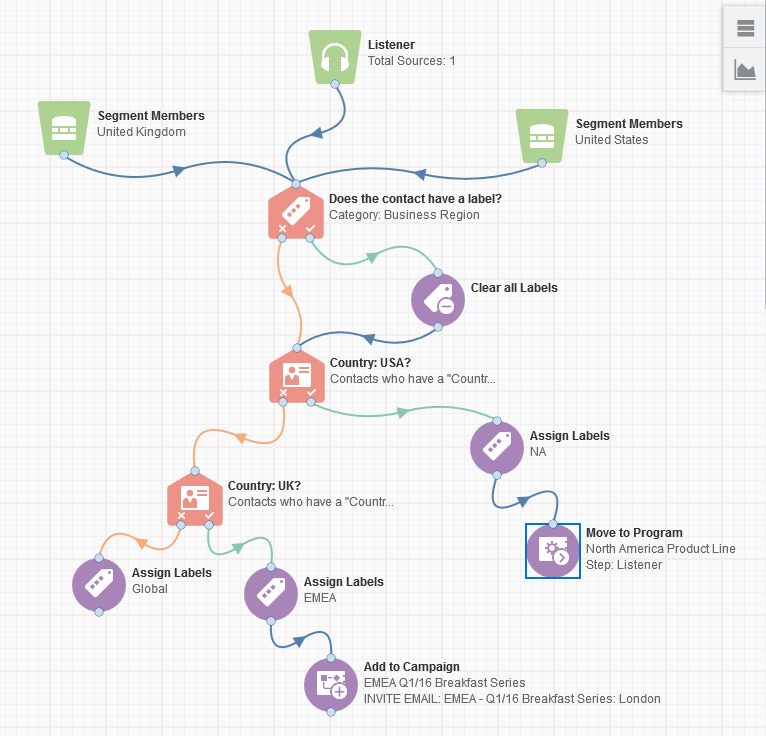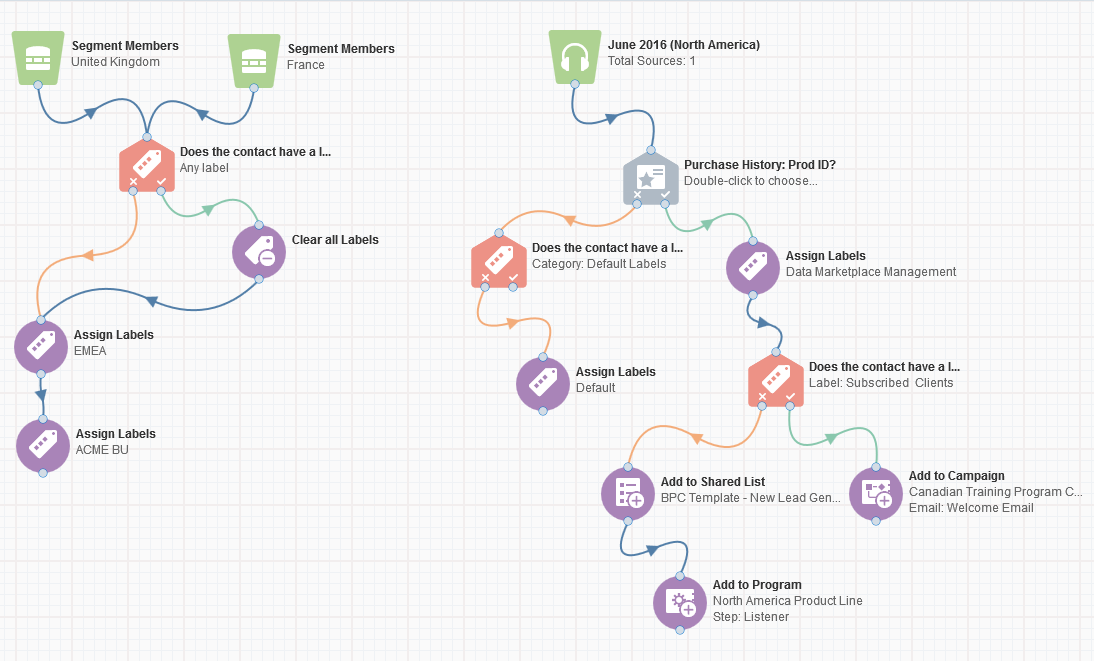Label assignment workflow canvas
The label assignment workflow canvas is where you create an automated program to assign labels to contacts. Once configured, the program reads your database for contacts, filters those contacts for various criteria, and organizes them by applying labels.
Learn more by watching the video!
Learn more by watching the video!
Note: This program canvas is similar to, but separate from, the standard contact program canvas.
The label assignment workflow canvas supports the following features:
- Contact-level security: A label-based approach supports explicit and shared access of contact data. Labels (and combinations thereof) ensure that only the right people have access to the right contact data.
- Multiple data sources: You can use the listener step to automatically process new contacts in real time, or use segments to periodically process older contacts in your database to ensure they have the appropriate labels.
- Unified workflow building: Seamlessly add, remove, or reposition program steps directly on the canvas. You can quickly configure and link program steps without ever having to navigate away from the workflow.
Program steps: the building blocks of programs
All programs are composed of three types of program steps:
- Data Sources: Pull contacts into your program from a specified source, and send them along through the next step of a program path. You can have multiple data sources connected to the same subsequent step.
- Decisions: Filter incoming contacts based on their contact or custom objects fields, or based on a shared list or filter. Contact are routed through either the Yes path or the No path depending on if they meet the filter criteria.
- Actions: Define an action for all contacts that pass through the step. For example, you can assign a label to all contacts, clear all labels from contacts, or send the contacts on to other programs or campaigns.
Each step has its own configuration needs: some steps, like Clear all Labels, are very straightforward, while others require some configuration. Consult program steps for the label assignment workflow canvas for more information on each step.
Example of program structure
At its most basic level, a program requires a data source and an action connected by a path. For instance, a very simple program could involve a segment of contacts as the data source, and the action could be assigning a specified label. In this case, all contacts in the Segment Members step are sent along a program path, and assigned a label once they reach the Assign Labels action step.
However, you can build up a program with varying degrees of complexity using multiple data sources and decision steps. You can also send your contacts to other programs and campaigns, but it is generally a best practice to design your program primarily for label assignment at first.
A program can have multiple data source steps and multiple action steps in the same program path. A program can also have separate program paths with their own starting points and endpoints.
Label-based programs are useful for a number of scenarios, including a division of product interests, geographical locations, or contact confidentiality. As always, we recommend that you plan your label structure to run very simple at first, and then edit your program as needed.
Note: Alternatively, you can also assign labels to contacts using program builder. However, we recommend the label assignment workflow canvas, as it offers a faster program setup, and more versatile data management options.
Next steps
Creating a label assignment program using the workflow canvas


